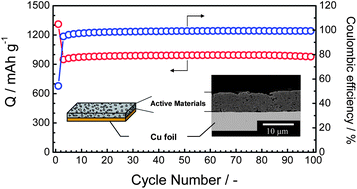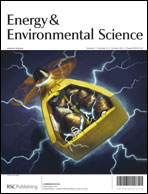High-capacity Si–graphite composite electrodes with a self-formed porous structure by a partially neutralized polyacrylate for Li-ion batteries†
Abstract
NaOH-neutralized poly(acrylic acid) is examined as a binder for Si-based negative electrodes in rechargeable Li-ion batteries. To better understand the influence of


 Please wait while we load your content...
Please wait while we load your content...